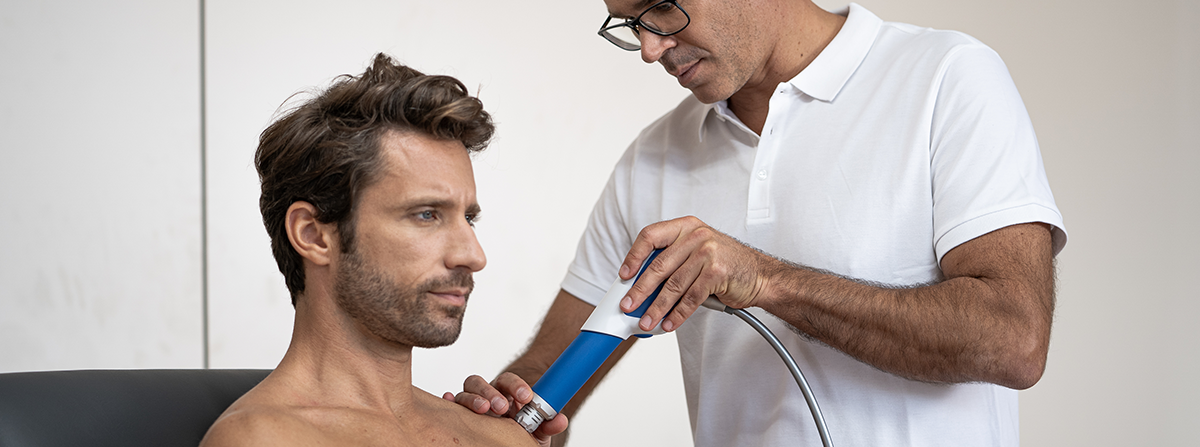La terapia extracorporea ad onde d'urto (ESWT) utilizza impulsi acustici per trattare alcuni disturbi muscoloscheletrici. È una modalità di trattamento ben studiata e comunemente usata per una varietà di condizioni muscoloscheletriche. La terapia ad onde d'urto extracorporea radiale (rESWT) è usata con successo per:
- Indicazioni superficiali, come fasciopatia plantare, tendinopatia di Achille, sindrome da stress tibiale mediale, sindrome da dolore trocanterico maggiore, ecc.
- Prima scelta per affrontare tendinopatie ed entesopatie calcaneari, fasciopatie, strappi miotendinei, patologie muscolari, trigger point e tessuti spastici.
- Patologie subacute o croniche

